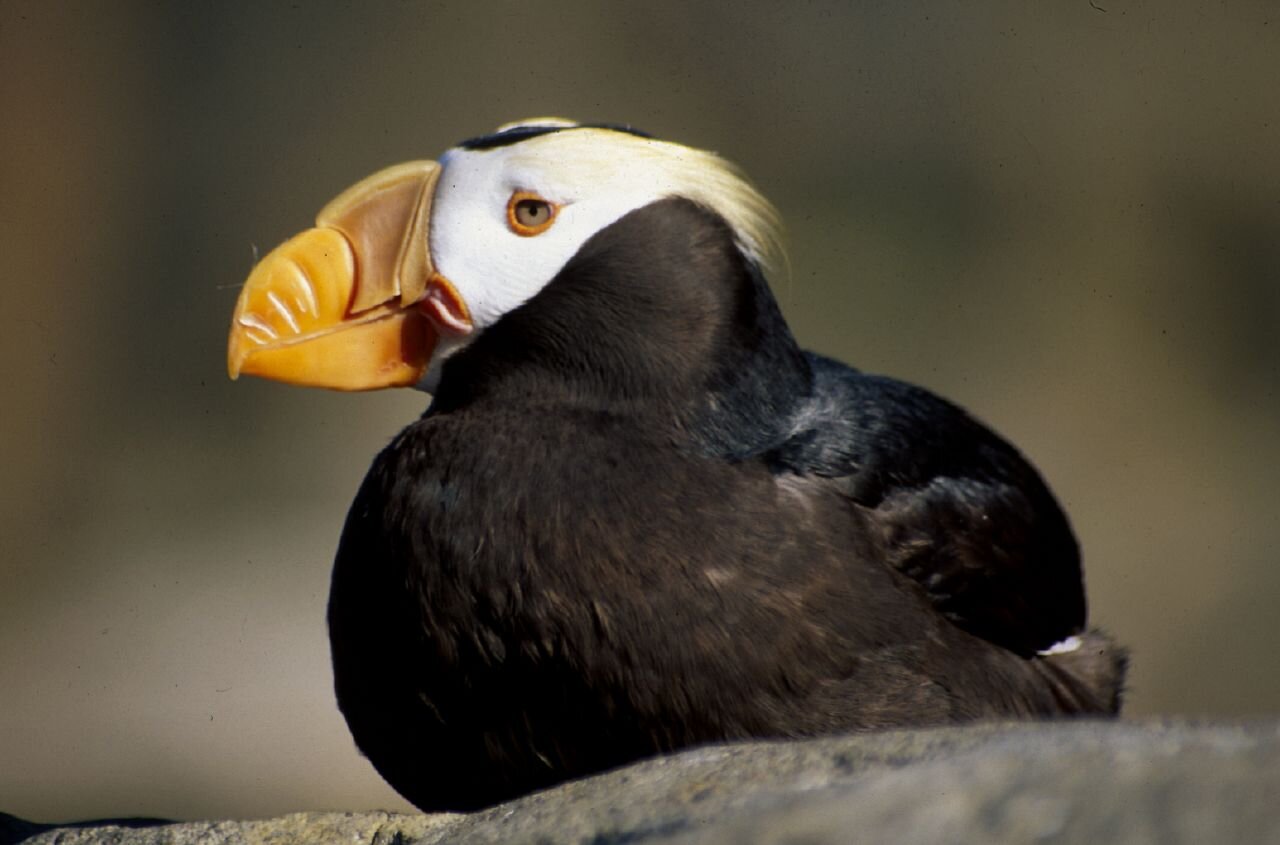Tufted Puffin Facts
The tufted puffin (Fratercula cirrhata) is a seabird known for its white-yellow tufts and distinguished, bright orange bill. Built for catching fish, they have waterproof feathers and small wings that act as fins to propel them through the water to great depths in search of fish. The tufted puffin spends almost the entire year at sea, only coming to shore to lay eggs and raise their young. They breed on isolated islands in the Strait of Juan de Fuca and the Strait of Georgia where the land is soft enough to tunnel burrows for nesting.
DID YOU KNOW?
Tufted puffins were once common in the Salish Sea with more than 40 puffin nesting colonies in Washington State. However, SeaDoc research from 2015 found that the population of puffins has decreased by 90% to less than 3,000 birds.
Adult tufted puffins only spend a few months on land during the summer. During this time, they breed and care for their young. The rest of their lives are spent on the open ocean searching for food.
Tufted puffins are skilled divers, but need to use their webbed feet to run across the water, building up momentum before going airborne.
Their iconic orange beaks are equipped with spikes inside which allows them to open their mouths underwater and collect fish as they hunt, carrying up to 20 fish at a time.
They are able to cool themselves down and regulate their body temperature after exerting energy during flight by using their beaks as heat regulators.
Photo by Bill Braire. Banner photo by Eric Ellingson (Creative Commons Flickr)


